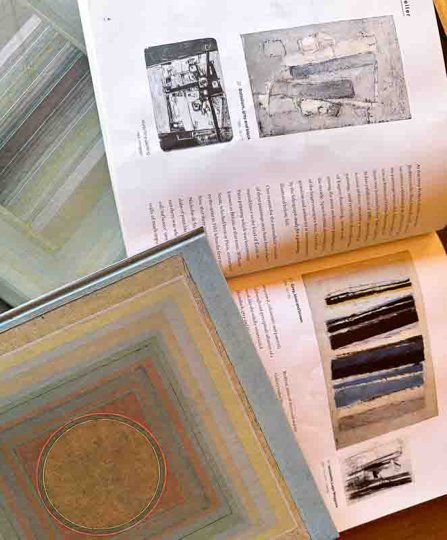Paul Feiler: From Landscapes to Abstractionism, An Artistic Odyssey
Paul Feiler - Born: 1918 in Frankfurt-am-Main, arrived in England 1933
In the world of art, few artists can claim to have embarked on a journey as remarkable as Paul Feiler's. From his early days as a landscape painter to his later triumphs as an abstractionist, Feiler's artistic odyssey is a testament to the power of creativity, imagination, and persistence. Here, we explore the evolution of his art from the early days of landscape painting to his later achievements in constructivist abstractionism. We consider Feiler's artistic techniques, his contribution to the constructivist art movement, and the legacy he left behind in contemporary art. Let’s review the fascinating world of Paul Feiler's constructivist art, and the influences behind one of the most celebrated artistic odysseys of modern times.
The Significance of Constructivist Art in Modern Art History
The constructivist movement originated in Russia in the early 20th century and emphasized the use of geometric shapes and abstract forms to create new, innovative art. Paul Feiler's contribution to the constructivist art movement was significant and influential. His style was unique, as he infused his works with an emotional depth that went beyond the mere formalism of the movement. He was drawn to the constructivist style due to its emphasis on structure and balance, and his use of bold, contrasting colours was a hallmark of his works.
Paul Feiler - Study for a Painting 1954 (Available from Rastall Art)
His works exemplified the core principles of the constructivist style while also incorporating personal symbolism, lines, mark making and emotional depth. Whilst Feiler’s line making can look structural, even industrial and always purposeful, his work is not austere or isolated.
Paul Feiler's Artistic Techniques in Constructivist Art
Whilst at Slade School of Art, Feiler studied alongside colleagues Patrick Heron and Bryan Winter, and later all became St Ives contemporaries along with good friends William Scott and Peter Lanyon. Feiler's use of geometric shapes, bold colours, and structured compositions were the hallmarks of his own style of constructivism and his interpretation of Cornish Landscapes grew to become more abstract.
He utilized a technique known as "poured painting", where he poured liquid paint onto his canvases and allowed it to flow and settle naturally, creating unique, organic compositions. Feiler’s paintings are characterized by good planning and meticulous execution and the use of contrasting colours and forms (many circles and squares) that created a sense of balance and harmony, while also conveying emotional depth and meaning.
Paul Feiler's Artistic Evolution towards Abstractionism
In 1950 William Scott returned from Paris and told Feiler of Nicolas de Staël’s work with thick heavy lines of paint. This seemed to influence Feiler as he was producing more thicker textured works. Feiler's artistic journey towards abstractionism was a gradual one, starting with his early landscape paintings that explored the natural world. Over time, he began to simplify and abstract his forms, gradually moving away from representational art towards a more abstract style.
After a very successful show at the Redfern Gallery, London in 1953 Feiler bought a disused chapel in Kerris just outside Penzance and although he did not move there permanently until 1974, his arrival in Cornwall and encounters with artists such as Ben Nicholson and Barbara Hepworth further cemented his transition to abstractionism. This was leading to works that incorporated elements of nature and the environment, while also exploring the structural possibilities of abstract forms.
Feiler’s recognition and influence
Other renowned abstract artists recognised Feiler’s contribution to art and the beauty of his work, for example in 1958 Mark Rothko visited Cornwall and Feiler’s house, stopping for tea. Whilst Feiler was considered an important part of the St Ives group, he also stood just outside of the limelight and ‘inner circle’ at that time. Many in the artworld are re-appraising his art and artistic influence.
In Feiler’s 2002 book ‘Connections’ published by The Redfern Gallery, the first few lines of Michael Raeburn’s introduction seem to condense much of Paul Feiler’s abilities, he writes
“In Paul Feiler’s landscapes there are no figures. Yet there is no sense of any absence of humanity, for these landscapes are inhabited by the artist himself. His presence is always and clearly present, and it is this that also places the onlooker within the landscape, establishing the intimate connection between artist and viewer that enables the artist to communicate his ideas through his own visual language.”
In conclusion, Paul Feiler's artistic journey from landscapes to abstractionism is a testament to the power of creativity and exploration. Throughout his career, Feiler remained committed to his unique approach to constructivist art, using geometry, colour, and personal symbolism to create works that were both intellectually rigorous and emotionally resonant. His legacy as a master of constructivist art lives on through his timeless and captivating works, which continue to inspire and engage art enthusiasts around the world. Through Feiler's life and work, we can gain insight into the creative process and the transformative power of art. We hope this article has inspired you to explore Feiler's legacy and embark on your own creative journey.





